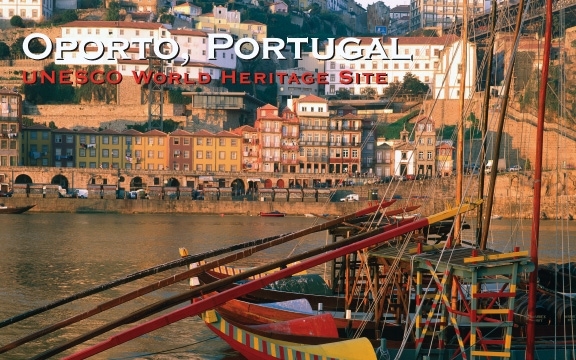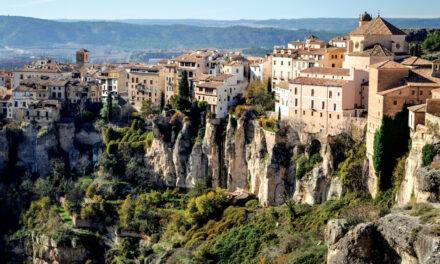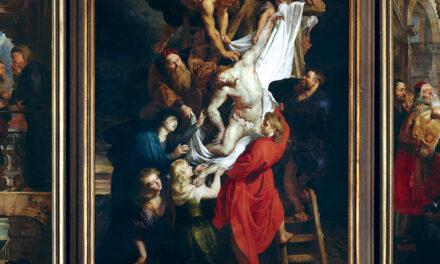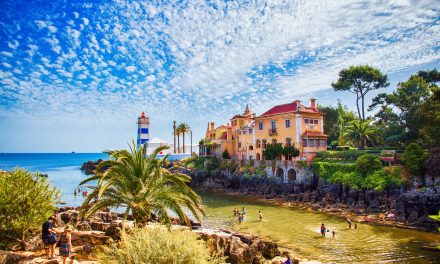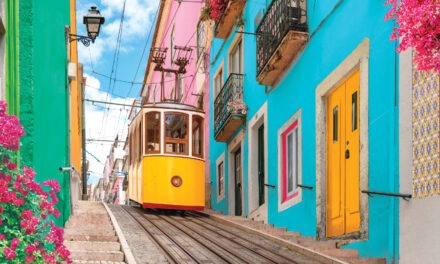Oporto, Portugal
UNESCO World Heritage Site
Published in the Summer 2005 Issue of Canadian World Traveller
Text: Excerpt from Ulysses’ travel guide to Porto by Marc Rigole and Claude-Victor Langlois (www.ulyssesguides.com).
Photos: Courtesy of Portuguese Tourism Commission (www.visitportugal.com)
Portugal’s second-biggest city in terms of population, Porto (Oporto in Portuguese) today remains, as in the past, a city of business and a major port. Despite its worldwide fame, Porto is relatively poor when it comes to monuments. The conquest of Portugal had scarcely ended when the movers and shakers of the day showed a preference for Lisbon. Thus, visitors should not expect to be wowed by a great number of attractions, but they will be surprised without fail by the spell-binding and mysterious atmosphere this city radiates.
Porto, for reasons that seem irrational, practically seduces those that pass through it. After a short stroll through the heart of the city, visitors cannot help succumbing to its charm.
Imagine, for a moment, working-class districts with decrepit houses just a few steps away from sumptuous mansions with baroque ornamentation.
Imagine a city where granite churches come across as so austere that it just seemed right to decorate their interiors to excess, with gold leaf streaming everywhere. Imagine broad, orderly avenues skirting alleys, passageways and stairways that crisscross in outrageous disorder and complexity. Finally, imagine the whole ensemble clinging to steep hillsides that overlook a harsh river whose banks are tempered by the presence of romantic boats and piers in perpetual animation. Is it the telescoping of these various pictures that creates the charm of this great lady?
Decide for yourself by visiting the ten following not-to-be-missed sites:
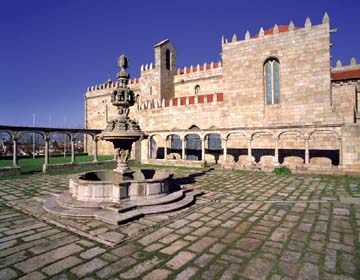 Downtown Porto
Downtown Porto
Convento y Igreja de Santa Clara
Situated just beside the Instituto Nacional de Saúde, at the end of a charming little tree-shaded square, the Convento y Igreja de Santa Clara has one of the city’s most intensely embellished church interiors.
Inside, an incredible profusion of woodwork (talhas douradas) seems to brighten the semi-darkness of the place thanks solely to the shine of its gilding. It would seem the sculptors didn’t miss a single inch! The church and the adjoining convent date from the 15th century, but underwent substantial modifications in the 17th and 18th centuries.
Estação de São Bento
Occupying the site of a former convent, Estação de São Bento (the central railway station) is worth visiting just to see its elegant waiting room. There you can admire the gorgeous azulejo scenes painted by Jorge Colaço in 1930. They relate several of Portugal’s great historical events as well as the evolution of transport.
Rua Santa Catarina
Known as the busiest shopping street in Porto, Rua Santa Catarina also harbours a few interesting sights that are a pleasure to discover: indeed, the street has been laid out as a pedestrian precinct, a wonderful concept that is not common enough throughout the city.
Museu Nacional de Soares dos Reis
Located in a former palace dating from the end of the 18th century, this museum is dedicated mostly to the sculptor Soares dos Reis (1847-1889), venerated in Portugal most of all for his famous O Desterrado (The Banished), symbolizing saudade (nostalgia). Besides these works, the museum also houses paintings by Portuguese and foreign artists, mostly from the 19th and 20th centuries, as well as some antique furniture and oriental porcelain.
La Ribeira and the Wine Storehouses
Rua das Flores
Rua das Flores merits a visit not only to admire its pretty baroque-style dwellings and its many silver shops, but also to contemplate the stunning baroque facade of Igreja da Misericórdia, also the work of Nicolo Nasoni. Its interior is decorated with gorgeous azulejos.
Fons Vitae
The Casa de Misericórdia displays one of Porto’s most paintings, Fons Vitae (The Fountain of Life). The work portrays a crucified Christ in the middle of a fountain that flows with his blood. King Dom Manuel, his wife and his two children face him on their knees while members of the clergy are praying all around. Executed around 1520, this painting is the work of an unknown artist. To this day, experts suggest it may be a Holbein or even a Van der Weyden.
Igreja de São Francisco
Perched next to the former board of trade and raised in relation to the street, the Igreja de São Francisco is one of the most elaborately decorated churches in Portugal. For this reason, it merits an in-depth visit. Whether in the central nave, in the side chapels, in the verge, in the transept or in the choir loft, talhas douradas predominate.
Starting from the top of the vaults, with an intensity that seems to come from the sky, and running down the columns, this gilding surrounds the faithful in such oppressive fashion that the church ended up forbidding worship services here. Granted, this exuberant decoration, executed around 1753 with 210kg of gold, was perhaps not conducive to abnegation and deprivation! Among the outstanding pieces, do not miss the magnificent Tree of Jesse, located in the left verge.
Ponte Dom Luís I
Built between 1880 and 1886 by a Belgian company, this bridge is the work of Portuguese engineer Teófilo Seyrig. It has two levels accessible to cars and pedestrians, and it links the lower and upper towns of Porto and Vila Nova de Gaia. It is fairly unpleasant to for it constitutes a major traffic artery, and the continuous noise spoils the pleasure of the views.
It is a better option for those who are travelling by car; 60m up, it offers a very impressive view of the city of Porto stretching in the distance and, on the other side, of the Douro Valley and the beautiful Dona Maria Pia railway bridge. The famous Gustave Eiffel was put in charge of erecting the latter between 1875 and 1877.
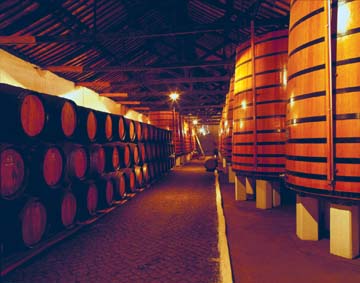 The Storehouses
The Storehouses
Today, the main attraction is a visit to the wine storehouses, an absolute must.
Established in great numbers on this side of the Douro, each one proudly displays the company name above the roof. Thus, you will see great names such as Sandeman, Borges, Taylor’s, Ferreira, Cálem and many others.
Most wine storehouses offer guided tours of their facilities with free samplings. They also sell wine for better prices than you would pay elsewhere.
Before beginning your tour of the wine storehouses, however, take the time to stroll along Avenida Diogo Leite, which runs alongside the Douro and provides a breathtaking view of Porto, perhaps the most beautiful of all. The city and its piers are reflected in almost surreal fashion in the waters of the river. Moored along the bank, several rabelos, loaded with wine casks as in the past, add a further touch of romanticism to the scene.
Avenida Boavista
Vila Serralves
Vila Serralves is known as the “rare pearl” of Avenida Boasvista. This 1930s ensemble will be of particular interest to those who like Art Deco. Built between 1925 and 1944 for a wealthy industrialist named Carlos Alberto Cabral, this is the work, both inside and outside, of several prestigious architects and designers including José Marques da Silva (for most of the structure), and Ruhlmann, Leleu, Lalique and Silva Bruhns (for the furniture and the interior decoration).
Acquired by the Portuguese government in 1987, the estate is now managed by the Serralves Foundation, which uses the building as a centre for contemporary culture.
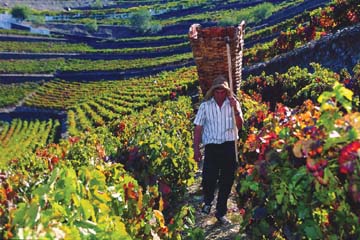
Porto Travel Guide
This text is an excerpt from Ulysses’ travel guide Porto, by Marc Rigole and Claude-Victor Langlois, available in all good bookstores or on the Web at www.ulyssesguides.com.
For More Info:
Portuguese Tourism Commission
60, Bloor Street West, Suite 1005
Toronto, ON M4W 3B8
Tel.: 416-921-7376
Fax: 416-921-1353
Email: icep.toronto@iapmei.icep.pt
Website: www.visitportugal.com
Embassy of Portugal
645 Island Park Drive
Ottawa, ON K1Y 0B8
Tel.: 613-729-0883
Fax: 613-729-4236
Email: embportugal@embportugal/ottawa.org
Website: www.embportugal-ottawa.org

